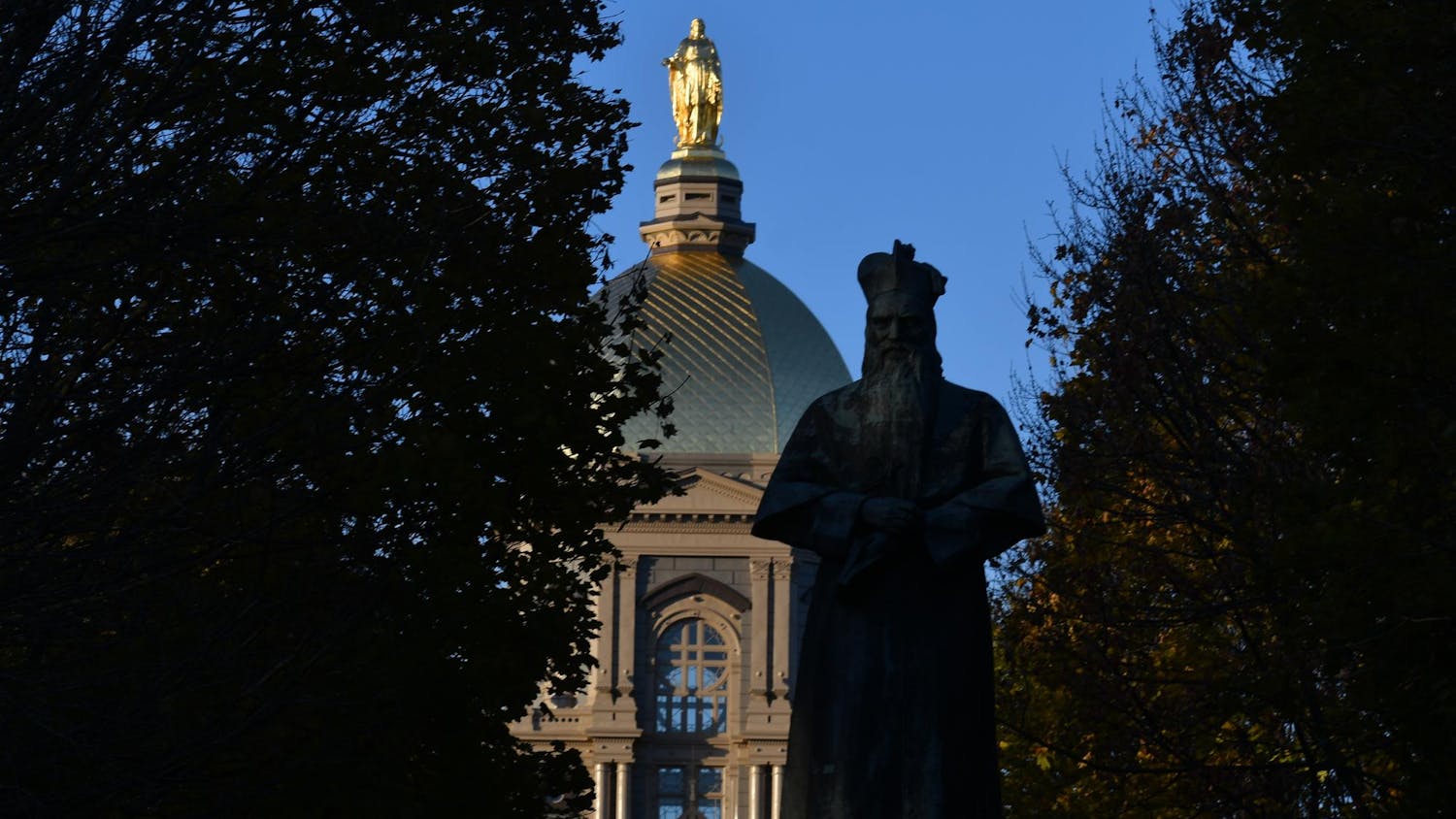Notre Dame is implementing a new system to reduce nonconsumable food waste while also fueling the clean energy needs of an Indiana farm, the University announced in a press release Monday.
The system, Grind2Energy, helps convert food waste into renewable energy — reducing food waste and emissions, odors and pests. Notre Dame is the second school in the nation to invest in the food-recycling system, the release said. The project is a collaboration with Campus Dining, the Office of Sustainability and Homestead Dairy, a dairy farm about 30 miles south of Notre Dame in Plymouth, Indiana.
“Our implementation of this solution to tackle a large portion of our nonconsumable food waste enables us to take a big step towards meeting our waste diversion goals set as part of our University Comprehensive Sustainability Strategy,” Carol Mullaney, senior director of sustainability, said. “While we continue to work on source reduction and donations of consumable food to local outlets, we will still have food waste and it’s exciting to know that it will now avoid the landfill and be converted into clean energy.”
The first of what will be three Grind2Energy systems — made up of a processing sink, a grinder and an outdoor holding tank — was installed at the University’s Center for Culinary Excellence in January, according to the release.
The 15-foot-tall holding tank can hold 5,000 gallons and is heated from inside so the contacts do not freeze, the release said. When it is time to empty the tank, a septic hauler adheres a hose to the bottom of the tank and pumps the waste into a septic truck, which is then transported to a nearby farm where the waste is converted to energy.
The report said the waste is a donation to the farm, though the University will experience the benefit of lower trash costs. North and South dining halls will receive Grind2Energy systems "in the near future," the report said.
“We’re excited to partner with our colleagues from the Office of Sustainability in the introduction of Grind2Energy at Notre Dame,” Chris Abayasinghe, senior director of Campus Dining, said. “Campus Dining is able to divert a significant amount of food waste from the local landfills. The compost generated from the units enables us to enjoy upstream and downstream benefits by combining technologies in LeanPath and Grind2Energy. We look forward to completing a successful rollout at North Dining Hall and South Dining Hall over the next few months.”
The three systems will reduce nonconsumable food waste on campus by 99 percent and overall campus waste by 10 percent, or 700,000 pounds per year, according to senior program director of the Office of Sustainability, Alison Mihalich.
The system is a result of research about food waste on campus by junior Matthew Magiera, who recommended digesting waste because of the lack of available space on campus, the release said.
The system works by breaking down organic waste, including food scraps from the Center for Culinary Excellence or the dining halls, and storing it in the holding tank as it is transported to Homestead farms. The waste is then converted to energy through anaerobic digestion, a process by which microorganisms decompose the scraps to produce a methane-rich gas that can be processed into energy or natural gas.
“It is almost a closed-loop, zero-waste process for the farmers,” Magiera said.
The system will add to several green initiatives Homestead Farms has in use, including converting cow manure and other substances into electricity.
“If you really look at the cycle, what we do as far as feeding the cows, growing the crop, producing energy off the manure and then using the manure as fertilizer to regrow the crop, that’s a pretty awesome green cycle,” Ryan Rogers, co-owner of Homestead, said.
Read More
Trending









